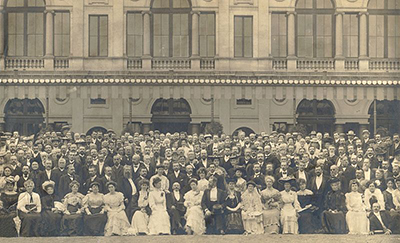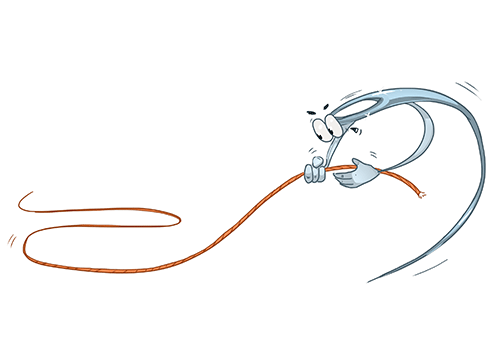Esperanto
Esperanto lingvo
Esperanto lingvo
Between 100,000 and 2-3 million (100,000 speak it fluently and 2-3 million have studied it)
In international Esperanto congresses and meetings only
Esperanto-speakers live in more than 120 countries. They are not an officially-recognized minority anywhere.
Esperanto society can be compared to a diaspora. Esperanto-speakers live all over the world, and have their own culture but no legal status.


The language was initiated by Ludwig Lazar Zamenhof, who created the grammar on the basis of European languages with a minimal quantity of exceptions. The vocabulary is mostly based on Romance languages, although there are also words from Germanic and other languages. The new language, the first textbook of which appeared in 1887, attracted a community of speakers and began a normal process of language evolution within a community who used it in many environments and created a culture associated with the language. Two decades later, the first children speaking in Esperanto with their parents were born, the first native speakers of the language. Thus, one can say that it is a language created for international communication, which later became creolized and is nowadays the language of a diaspora of Esperanto speakers.
It was created on the basis of the vocabulary of Indo-European languages, but was intended to be easy to learn. For this reason, its grammar is agglutinative, a characteristic feature of Turkic and Finno-Ugric languages, and at a deeper level it is isolating, as in Mandarin Chinese and Vietnamese. This means that its morphemes can be used as independent words. It has a completely regular grammar and allows the creation of a large quantity of words by combining lexical roots and about forty affixes (for example from the radical san- (healthy), it is possible to create words such as: malsana (“sick”), malsanulo (“sick person”), gemalsanuloj (“sick people of both sexes”), malsanulejo (“hospital”), sanigilo (“medicine”), saniĝinto (“person who has recovered”), sanigejo (“curing place”), malsaneto (“little illness”), malsanego (“extreme illness”), malsanegulo (“very sick person”), sanstato (“health state”), sansento (“health feeling”), sanlimo (“health limit”), malsankaŭzanto (“pathogen”), kontraŭmalsanterapio (“therapy against sickness”)…). The main parts of speech (nouns, verbs, adjectives and adverbs) have consistent endings that always allow the recognition of all parts of speech. Its regularity makes it particularly easy to learn, and its streamlined capacity to create new words make it one of the most productive languages, with a potentially unlimited number of words, is capable of expressing all new ideas or states. For example, it is possible to write a novel about fictional table-shaped Martians and to call them tablo (“table”), tablino (“female table”), tablido (“table offspring”)… We can imagine a device which simplifies sex life and call it sekssimpligilo (“sex-simplifier”), a man who walks backwards (inversmarŝanto, “reverse-walker”), a remedy against dogmatism (maldogmigilo, “undogmatizer”), etc.
The first primitive version of Esperanto, which Zamenhof named Lingwe Uniwersala, is completed. However, it differs considerably from modern Esperanto.
Zamenhof with his wife's help publishes Unua Libro, the book introducing modern Esperanto.
The first Esperanto magazine, La Esperantisto, is published in Nurenberg, and the first Esperanto club is founded.
The first Universala Kongreso (World Congress) is held in Boulogne-sur-Mer, with 688 participants.
The Fundamento de Esperanto is published.

Universala Esperanto-Asocio, the World Esperanto Association, is founded.
UNESCO establishes consultative relations with the World Esperanto Association. First UNESCO resolution.
Second UNESCO resolution. UNESCO encourages UN member states to add Esperanto to their school curricula.
6000 Esperantists attend the 72nd Universala Kongreso in Warsaw to mark Esperanto's centennial.
An Esperanto version of Wikipedia - the largest online encyclopedia - reached 100.000 articles.
It is possible to pass international Esperanto exams at three levels (B1, B2, C1) and be evaluated in the 4 basic skills: reading and listening comprehension, written and oral communication, according to the Common European Framework of Reference.
Google Translate added Esperanto as its 64th language.
Esperanto is read as it is written. Each letter always has the same sound, the same sound is always expressed by the same letter, and the stress is always on the next to last syllable. Diphthongs such as aŭ, eŭ, oŭ or aj count as one syllable.
Some special letters in Esperanto, with English transliterations: ĉ = ch, ŝ = sh, ĝ = j, ĥ (ch as in Scottish loch), ĵ = zh (or French j).
All nouns end in -o: tabl-o (table), lamp-o (lamp), hom-o (man).
All adjectives end in -a: bela (beautiful), granda (great), malgranda (little, small).
All infinitive verbs end in -i: havi (to have), iri (to go).
In the present tense the ending is -as: mi manĝas (I eat), li manĝas (he eats), ili estas (they are), mi estas (I am), ŝi estas (she is).
The past tense ending is -is. Some examples include li lernis (he learned), ili estis (they were), homo estis (a man was), li manĝis (he ate).
The ending for the future tense is -os, as in mi lernos (I will learn), Marko sidos (Marko will sit down).
In addition to the nominative case, there is also an accusative ending which is used for nouns, adjectives and pronouns in both the singular and plural: -n, e.g. Mi vidas aŭton. Aŭton mi vidas. (I see the car.)
Thanks to the accusative, the word order is free.
The plural of nouns and adjectives is formed by the ending -j added after the -o or -a ending: libro (book), libroj (books).
There are about forty prefixes and suffixes which help to create new words. Some of the most common include the prefix mal-, which turns the meaning of the word into its opposite. This is how bona (good) becomes malbona (bad) and bela (beautiful) becomes malbela (ugly).
The suffix -ul means 'person', so grandnazulo = big-nosed person. The suffix -in creates female forms like grandnazulinoj (big-nosed women).
| Singular | Plural | |||
|---|---|---|---|---|
| Nominative | Accusative | Nominative | Accusative | |
| Article (a / the) | - / la | - / la | - / la | - / la |
| Adjective (big) | granda | grandan | grandaj | grandajn |
| Noun (wolf) | lupo | lupon | lupoj | lupojn |
There are two main portals where you can learn the language online. A general site is www.lernu.net while www.edukado.net is mainly for teachers.
Wikipedia in Esperanto: eo.wikipedia.org.








